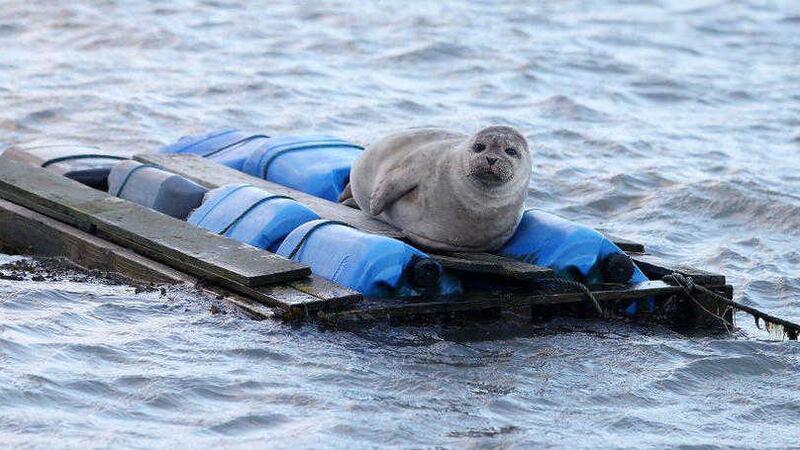PERCHED on a ring of seaweed-draped rocks, five seals lounge, their tails still dipped in the water and twitching as the waves lap against them.
They look uncomfortable as they sprawl, having hauled themselves out from the waters south of Newcastle.
When swimming, their movements are flowing and languid but one after another they come wriggling awkwardly out of the sea as if to look around and discuss the day’s events.
A grey February morning, a low flying cormorant and someone gawking at them through a pair of field glasses from the rocky shore.
The beach along the Ballagh can be accessed from the Bloody Bridge car park on the road between Newcastle and Kilkeel. A path rises back up to St Mary’s Church, now only recognisable by a stone arch and a few tumbled walls.
Stumps of gravestone are scattered around it but any inscriptions that they once bore have been long washed away by the winds and rains that come in from the Irish Sea and down off the Mourne Mountains.
Back down onto the path that runs above the shoreline, startling the occasional stray ewe grazing on the tough grass and shrubs that grow here. The path descends over a steep outcrop of rock, with just the barest semblance of ridges that allows you a foothold as you come on to the shore.
The sound of the sea takes on a deeper resonance as it pounds on to the boulder-strewn beach, rising to a more sibilant note as it washes back out over smaller stones.
The surface is uneven, the pebbles shifting underfoot, rocks and boulders an obstacle course to be skirted around.
The beach rises towards bracken and whin-covered terraces that flatten into a few narrow fields before rising again to become the slopes of Chimney Rock Mountain.
The terraces are a geological story book of the past 10,000 years, marking the slow rise of former shorelines that had been crushed under millions of tonnes of ice and snow during the last ice age.
According to E Esrtyn Evans’s Mourne Country (a must-have for any true love of the history and folklore of this area) the ice sheets would at one time probably have covered even the highest peaks in the Mournes.
Released from the huge weight, parts of the former beaches have slowly risen 50 feet above sea level.
After watching the seals hold court for a while, I start walking again but my movement has startled them and with ungraceful lurches they hurl themselves back into the sea.
But as I walk I can see one of them shadowing me, swimming close to the shore and popping its head out of the water now and again to keep an eye on what I am doing.
Past a dense, gnarled forest of stumpy thorn trees, The Ballagh River tumbles from Blaeberry and Spences mountains, through a deep valley and into the sea at the Green Harbour -– a natural inlet rather than a man-made port.
In the distance I can see St John’s Point lighthouse, while behind me lies the valley and the mountains shrouded in cloud.
Tattered lobster pots, cracked crates with the names of fishing ports in Wales and Scotland, driftwood, brine-bleached ropes, car tyres, the remains of a child’s toy, a wellie boot and a sheep’s skull lie strewn among the rocks.
Is it any wonder the seals have to keep an eye on us?







